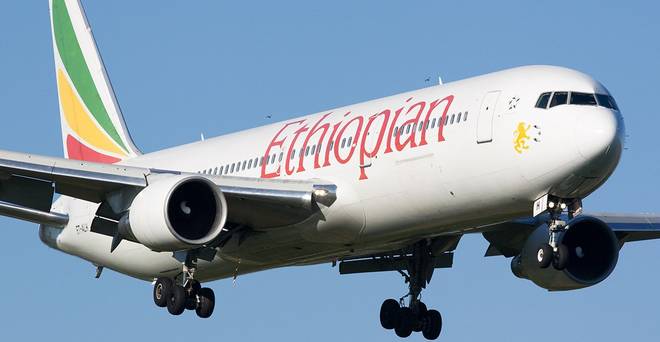A few takes on the Ethiopian Airline “All-Women Flight Crew”
The news was all over the papers, Internet, and airways last week asking that we celebrate the historic flight from Addis Ababa, Ethiopia, to Lagos, Nigeria, because the entire crew: pilots, cabin crew, in-flight ramp agents, and on-ground flight dispatchers were all females. This evidently is a great event that should be cherished because it […]

Ethiopian airline

The news was all over the papers, Internet, and airways last week asking that we celebrate the historic flight from Addis Ababa, Ethiopia, to Lagos, Nigeria, because the entire crew: pilots, cabin crew, in-flight ramp agents, and on-ground flight dispatchers were all females. This evidently is a great event that should be cherished because it doesn’t happen that often anywhere. Even in the U.S. with over 60 years of aviation history; all-female crew is not commonplace; although Southwest Airlines, a low-budget, no-frills U.S. carrier, flew a Boeing 737 between St. Louis, Missouri to San Francisco, California, last October with an all-female crew. An African country, Malawi, has also done this in a flight from Blantyre, Malawi to Dares-Salaam, Tanzania. India is ahead of the curve, sort of: Air India, apparently had its first all-female-crew flight from Calcutta to Silchar, India in 1985, only to outdo itself in another all-female crew on an international flight from New Delhi to San Francisco on International Women’s Day in (March) 2017.
The Ethiopian Airline event is particularly significant for two reasons. For a long time, women in the crew served somewhat subservient, if not demeaning, roles; such as dressing up in ways that “appeal” to the men onboard. Women were just not taken very seriously back then, and sadly, there are still vestiges of this all over the place. There is a story on the Internet – I don’t know how true it is – that suggests that in the early 1970s, flight attendants were required to wear hot pants and leather boots in order to get a job on the same Southwest airline alluded to above. According to the story, the caption on Getty reads, “Stewardesses working for Southwest Airlines of Texas must be able to wear hot pants and kinky leather boots or they don’t get the job. In accordance with the airline’s motto, ‘sex sells seats’ interviewees are selected on the strength of their legs and their face.” Obviously, women deserve better, and having an all-female crew is certainly an evolution in the right direction.
The other reason why the event of last week is important is the fact that the crew members appear to be all black! This wouldn’t have mattered much but because of the labels that black people continue to get from non-blacks regarding our capability and capacity. Obviously, these labels have no basis in truth, but they do generate negative energy that the world should have transcended centuries ago but hasn’t for the most part. In that connection, it’s curious to observe that the all-female crew in the October 2017 Southwest Airline flight appears to have no black people in it, even with the population of blacks in the U.S. Please note that I am not necessarily suggesting a discriminatory situation here – though black people do get a lot of it in the U.S. – but to emphasize that whatever reasons are responsible for not having a black female in the crew appear to speak to a more serious problem. Thus, the Ethiopian Airline event provides a balancing situation.
Ethiopian Airline is at the forefront of shaping the image of women, and in this case, black women. There has been a previous female-operated flight: in 2015 from Addis Ababa to Bangkok, Thailand. It’s reported that one-third of Ethiopian Airlines’ employees are women, but that they were more comfortable filling positions for gate agents and flight attendants, than for technicians and pilots. It seems clear that the progress that Ethiopian Airline is making is not happening by accident, but by conscious efforts. The airline has been reported as saying: “This is an ample opportunity to inspire young African female students to believe in their dreams and embark to fill the skill gap for aviation professionals. Women are the continent’s greatest untapped resources.”
As far as the aviation industry is concerned, the foregoing addresses a solution to half of the problem. The other half of the problem pertains to educating our children as aerospace or aeronautical engineers. I mean engineers who can design aircraft and rockets, and capably supervise the production of these vehicles. Obviously, this starts with the science, technology, engineering, and mathematics (STEM) fields in high school, about which I have written extensively in this column. Females are particularly intimidated to go into these fields because they feel “boys” are more suited to them. I certainly do not believe this to be true, since one of my own daughters has a couple of degrees in aeronautical engineering and has been mentoring American females – black and white alike – to go into this field. This is also the logical next step for African females interested in the aviation field.
Africans represent a few of the most intelligent people on earth. However, they need to set the right goals; adding diligence, discipline, and persistence; and hoping that their governments will provide the environment that will allow them to flourish.
